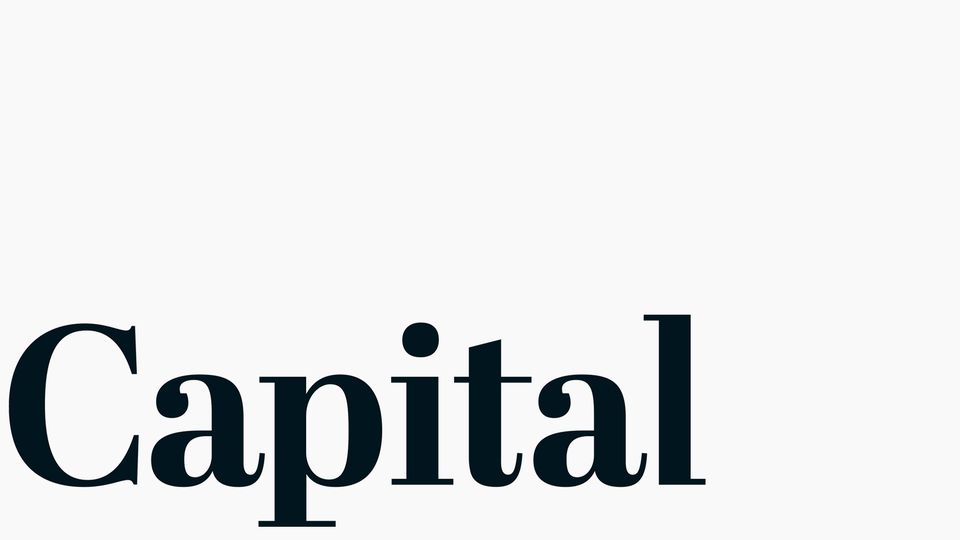The Fed cuts interest rates by 0.5 percentage points, ushering in a phase of interest rate cuts. The DAX then jumps above 19,000 points for the first time. But there are also losers.
Trump or Harris?
The interest rate move is more likely to benefit Kamala Harris than her Republican opponent. Donald Trump immediately suspected a conspiracy and accused the Fed of playing “a political game.” He had previously questioned the independence of the central bank. Fed President Jerome Powell is a Republican.
But Trump also has another explanation for the interest rate cut: it is a sign of how bad the US economy is. A weak economy, he says, would increase his chances of being elected. After all, the Republican is more trusted in economic policy than the Democrat.

This is original content from the Capital brand. This article will be available for ten days on stern.de. After that, you will find it exclusively on capital.de. Capital, like the star to RTL Germany.
One thing is clear: the lower interest rates will benefit the economy. If the US economy does not slide into recession, that will be good for Vice President Harris and the Democrats. The economy is what matters, as former President Bill Clinton already knew. If people are doing well, that will benefit the government. Harris welcomed the interest rate move and promised that as president she would not interfere in the affairs of the central bank. At the same time, she announced that as president she would fight inflation: “I know that prices are still too high for many middle-class and working-class families.”
Nevertheless, the question remains as to how great the impact of the interest rate cut will be on the election campaign. The USA is deeply divided. Ardent Trump supporters are unlikely to base their voting decision on the ups and downs of the economy.
How is the economy developing?
Concerns about the US economy have recently grown. There were even fears of a recession, which may have increased the central bank’s inclination to significantly cut interest rates. But the situation on the labor market was the most important factor, says Michael Heise, chief economist at HQ Trust. He believes that fears of a recession are exaggerated. “Although the labor market data show a clear slowdown with lower employment growth and fewer vacancies, there is no prospect of a recession.”
Thomas Altmann, portfolio manager at QC Partners, expressed similar views: “The Fed has increased its year-end forecast for the US unemployment rate from 4.0 percent in June to 4.4 percent now. That is likely to have been the key reason for today’s major interest rate hike.” If the calculations work out, the economy will pick up and companies will start hiring more people again.
There is a question mark over inflation. “The central bank will keep a close eye on inflation, which has recently fallen significantly due to energy price developments, but is by no means at the central bank’s target level in the large service sector of the US economy,” said Heise.
Loans for consumers and companies are becoming cheaper
For companies, the interest rate cut means relief: The interest costs for short-term loans would fall, said Heise. Companies that invest in new machines or purchase new software will benefit from this because the loans will be cheaper. On the consumer side, this applies to the purchase of a house or a car. Here, too, there could be more favorable conditions after the interest rate cut.
ING chief economist Carsten Brzeski also sees positive effects for German companies. “The Fed’s strong intervention increases the chance that the US economy will have a soft landing,” the economist told the Reuters news agency. “That would also be good news for the German economy, because almost ten percent of our exports go to the USA.” Lower interest rates and only a slight economic downturn should strengthen demand for German cars and other consumer goods.
How do Dax, Wall Street and investors react?
The fluctuation on the US stock exchanges after the interest rate cut was initially small. In Germany, however, the DAX rose above the 19,000 point mark for the first time. Raw materials such as oil and copper became more expensive. The reason: when the economy picks up, demand for these raw materials also increases. The price of gold also continued to rise, making gold more valuable. The precious metal itself does not generate any returns, but its price normally rises when interest rates fall.
Bonds and stocks
Otherwise, a look into the past helps. Capital market analyst Pascal Kielkopf from HQ Trust has examined 17 interest rate cuts by the US Federal Reserve since 1973. The picture is clear for bonds: on average, they recorded an increase of 10.8 percent. The situation is different for stocks, which only rose by an average of 0.4 percent. “The spreads were sometimes extreme: while stocks lost almost 40 percent during the financial crisis, they were able to gain 45 percent in the early 1990s,” says Kielkopf.
On average, investors were able to earn more with bonds than with stocks during periods of interest rate cuts. “However, when stocks rose, investors made more money with them than with bonds in six out of seven cases,” the expert found.
Defensive sectors, such as food manufacturers or personal care products, performed best in phases of falling interest rates. This was the result of another analysis by HQ Trust. In the past, however, tech stocks have not been among the outperformers in such phases.
Source: Stern




